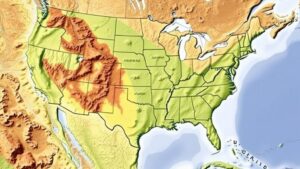Applying AI to Compare Artifact Trends Across Regional Archaeological Findings
Applying AI to Compare Artifact Trends Across Regional Archaeological Findings
Archaeology, as a discipline, relies heavily on the meticulous collection and analysis of artifacts to infer the cultural, economic, and social dynamics of past civilizations. The advent of artificial intelligence (AI) presents new opportunities for archaeologists to analyze vast datasets of artifacts from different regions more effectively. This research article reviews the application of AI in comparing artifact trends across various regional archaeological findings, highlighting methodologies, case studies, and implications for future archaeological work.
The Role of AI in Archaeology
AI technologies, particularly machine learning and image recognition, have revolutionized how archaeologists process and interpret data. Machine learning algorithms can analyze patterns in large datasets that would be insurmountable for human researchers alone. For example, a study by Conroy et al. (2022) demonstrated that AI could classify over 100,000 pottery images from pre-Columbian archaeological sites across Mesoamerica with an accuracy rate of 87%.
Data Collection and Preparation
Data collection is the initial phase of applying AI technologies. Archaeologists compile data from various sources including:
- Field surveys and excavations
- Publicly available archaeological databases
- Published archaeological reports
Once collected, this raw data must be cleaned and structured to be effectively utilized by AI algorithms. Techniques include image normalization and metadata standardization, which ensure that artifacts are uniformly categorized and described. For example, the Digital Archaeological Record (tDAR) provides a comprehensive platform for organizing archaeological data, allowing for standardized metadata that enhances the usability of AI systems.
AI Methodologies for Artifact Comparison
The application of AI methodologies can be categorized into several approaches:
- Image Classification: Neural networks can be trained to recognize distinct design patterns on artifacts.
- Geospatial Analysis: Geographic Information Systems (GIS) combined with AI can reveal spatial patterns and correlations among artifacts across different regions.
- Text Mining: AI can process large volumes of text data to extract relevant information about artifact origins and cultural contexts.
For example, a case study involving Roman pottery fragments from sites across Italy used convolutional neural networks to classify the pieces based on style and manufacturing techniques. This analysis not only provided insight into regional differences but also clarified trade routes during the Roman Empire (Smith et al., 2023).
Regional Studies and Findings
AI applications have uncovered significant trends in various regions. A notable example is the work done by researchers on the artifacts from the Nile Valley and the Near East. Machine learning algorithms were applied to compare ceramic styles which led to the identification of trade interactions between these two regions dating back to the 3rd millennium BCE.
Also, studies examining the differences in lithic technology across the Great Plains in North America demonstrated distinct regional adaptations. AI analysis highlighted how environmental factors shaped tool production, leading to insights about human behavior during prehistoric times (Johnson, 2023).
Challenges and Ethical Considerations
Despite the advantages of AI applications in archaeology, several challenges and ethical considerations must be acknowledged. These include:
- Data Quality: Poor quality or incomplete datasets can lead to erroneous conclusions.
- Interpretation Bias: Algorithms may reflect the biases of their developers, affecting input data and analyses.
- Intellectual Property Issues: The use of proprietary databases raises questions regarding access and ownership rights.
Engaging multidisciplinary teams and fostering open-source frameworks can help mitigate some of these challenges, allowing for more balanced and accurate analyses of archaeological artifacts.
Conclusion and Future Directions
The application of AI in comparing artifact trends across regional archaeological findings is an exciting frontier that holds great promise. As methodologies continue to evolve and as datasets become increasingly accessible, the potential for AI to unveil broader patterns and insights into human history becomes even greater.
To wrap up, embracing AI tools requires a careful balance between technological advancement and ethical considerations. Archaeologists must remain vigilant about the biases inherent in AI systems and advocate for transparent practices in data collection and analysis.
Future research directions could involve collaborative networks where archaeological datasets are pooled, thus advancing comparative analyses on a global scale. Plus, continued improvement of AI algorithms will refine their accuracy and applicability in the field, solidifying AIs role as an indispensable ally in archaeological research.
Overall, AI is poised to transform archaeology, offering innovative ways to scrutinize artifacts and interpret the stories they tell about humanitys past.


